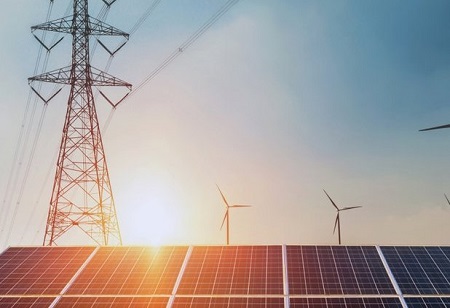
According to a report, energy storage can assist India in integrating large-scale variable renewable technology into its electrical system. Battery storage, green hydrogen, and flexible coal-fired power generation are highlighted in the report by the Institute for Energy Economics and Financial Report as essential sources for assisting the South Asian nation to overcome the considerable difficulties to scale up clean energy.
Grid integration involves developing efficient ways to add variable renewable energy (VRE) to the grid. Stability of the power system is maintained or increased while maximising the cost-effectiveness of incorporating variable renewable energy. Demand response, distributed generation, and energy storage technologies are also combined in the power distribution and transmission system. Continual fluctuations are common with renewable energy sources like solar and wind. Among the difficulties encountered in grid integration and energy storage implementation are:
The increased cost of transmission
As production capacity, transmission location, and demand fulfilment become more important factors, the development of transmission networks for renewable energy sources will become more complicated in terms of technology and cost allocation. Since offshore wind energy resources require more advanced technologies than land-based transmission lines, their transmission prices are significantly higher. This greatly increases the difficulty of integrating renewable energy sources into the system. Utilising distributed energy resources, where energy is generated and consumed locally on a microgrid, can alleviate this issue while preventing line losses and the high capital expense of transmission lines.
Maintaining system reliability and stability
The more frequently renewable energy technologies are used, the harder it will be for system operators to maintain the stability and dependability of the system. Renewable energy production is less coordinated, managed, and predictable. System operators' requirements for reserve, response, and other ancillary services must be reevaluated, and new sources must be identified to meet these needs.
The aforementioned challenges can be addressed by implementing emerging technologies which include:
Large-scale energy storage technology deployment
Energy storage is an efficient method for balancing grid supply and demand when used in conjunction with renewable energy. The introduction of large-scale energy storage technology provides front-of-the-meter services including grid support and generation support. Energy storage technology also enables time-shifting of renewable energy and strengthening of renewable energy capability. Energy storage also improves power quality, regulates distributed power output, reduces energy imports during times of high demand, and limits the need for peak loads. Energy is stored on a vast scale using battery energy storage systems. By 2050, the installed capacity of battery energy storage is projected to reach 600GW from 17GW in 2020.
Virtual Power plants
A virtual power plant is a power plant interface that enables the mixing, management, and control of scattered energy sources, moving power plants (such as electric vehicles), and renewable energy resources. Electricity generated by these energy sources is subsequently delivered to the grid. These virtual power plants enable small energy producers to engage in energy markets, utilise net metering, and enhance grid performance.
Hydrogen Storage
Since it can be essential for grid integration, various nations are focusing on producing clean hydrogen from solar and wind energy globally. Hydrogen can be stored, used as fuel, or used as an energy carrier to control varying energy flows. A lot of countries have set objectives and policies to support the development of hydrogen storage technology. It's probable that storing hydrogen as a fuel won't be practical using conventional storage systems due to worries about security, cost, efficiency, flexibility, environmental constraints, etc. Therefore, the fundamental objective of research and development in hydrogen storage is to create low-pressure, material-based solutions. These technologies have the ability to store enormous amounts of hydrogen. Examples include borohydrides, amide/imide combinations, liquid organic hydrogen, and metal-organic frameworks.
Renewable energy sources have gained popularity due to their durability and negligible environmental harm. Due to increased energy demand and depleting fossil fuel supplies, attention has been paid to developing environmentally friendly energy systems and expanding the use of renewable energy sources. Increased access to low-cost variable renewable energy, the use of distributed energy resources, advancements in digitalization, and expanding electrification potential are all having a big impact on the world's power networks. By providing energy security, better efficiency, and demand-side management, the incorporation of renewable energy enhances system resilience. Renewable energy sources can be integrated into power networks using a variety of technological techniques. Additionally, significant advancements in solar and wind technologies would enable their use in a wider range of conditions.
We use cookies to ensure you get the best experience on our website. Read more...